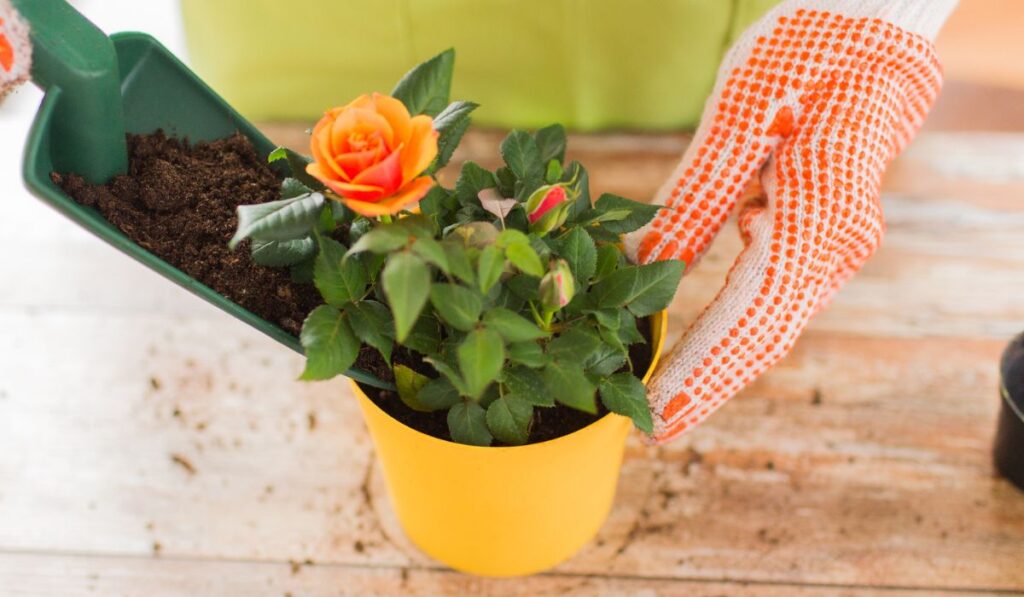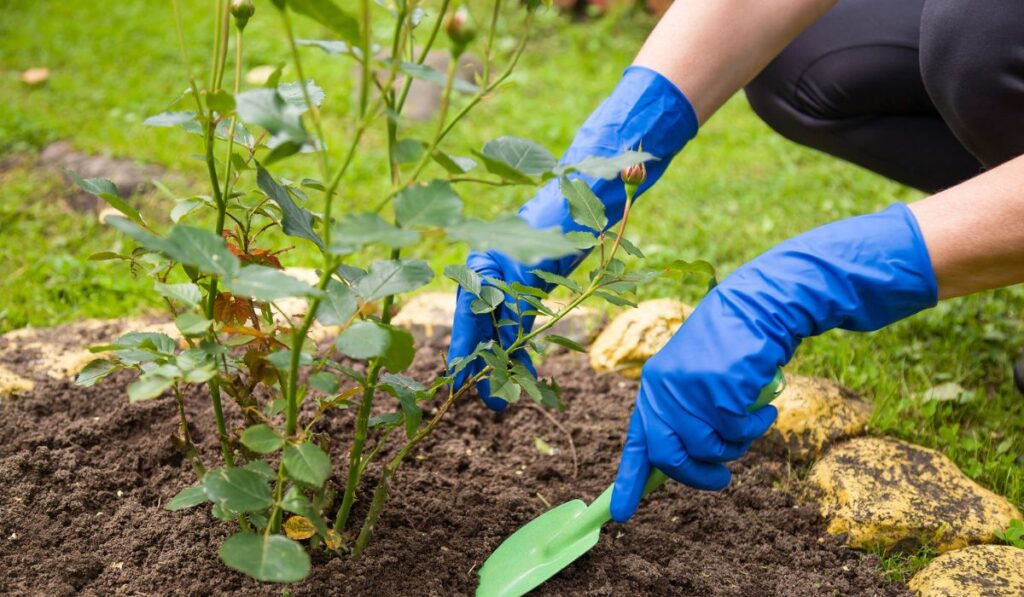When you buy a rose plant, it’s often bundled in a plastic bag filled with sawdust and has short, leafless canes. However, with a little effort and time, the little plant can grow into something magnificent. Here are some tips for growing beautiful roses this year.
Plant your roses in a sunny location with well-drained, slightly acidic soil. Fertilize your roses regularly and water them evenly for impressive flowers. Prune established rose bushes in early spring and keep an eye out for diseases like black spot and powdery mildew.
Roses are a classic that can accentuate the landscape, and anyone can grow them successfully with some preparation and patience. Let’s get into the details and learn how to plant, maintain, and care for roses.
Choosing Your Roses

There are several types of roses, and some contain hundreds of varieties. While filling your garden with a wide assortment of roses may be tempting, you’ll probably end up with a disorderly garden and too many plants for the space.
A couple of well-chosen varieties guarantee more satisfaction than dozens of plants that aren’t in perfect harmony.
The following are some of the best types of roses to choose from to fill your garden:
- Floribunda
- Grandiflora
- Hybrid tea
- Polyantha
- Shrub
- Climbers
Prepping Your Garden
The first step toward growing beautiful roses is picking the right spot for planting them. Choose a location where your flowers will get plenty of air, sunlight, and light shade during the early afternoon. Be sure to keep the shade light, as roses won’t thrive in deep and continuous shade.
Determine your soil type and make amendments to suit the roses. Ideally, it should be a loamy mix with free internal drainage and slight acidity. It’s best if it’s rich in organic matter and fertilizer nutrients.
Add plenty of organic materials to your soil. You can use compost or grass clippings and leaves from around your yard.
Dig and aerate your soil after allowing the organic materials to release nutrients into the soil. Use a spade or an electric tiller (on Amazon) to turn the soil in every part of your garden.
Consider adding other nutrients such as bone meal, blood meal, or NPK (Nitrogen, Phosphorus, Potassium) to the soil to help your roses flourish.
Planting Your Roses
Now that your garden is ready, it’s time to plant the roses. Here’s how to plant them properly and ensure they get off to a good start.
Potted Roses
- Before removing the rose from its pot, water it well.
- Break up the soil at the base of the hole using a fork to allow the roots to go deeper into the soil.
- Use a spade to dig a wide and deep enough hole to hold the rose’s root mass. The hole should be about 40 cm wide and 60 cm deep.
- Mix well-rotted farmyard manure (a small spadeful) with the soil inside the hole. It will add nutrients to the soil.
- Sprinkle the correct amount of mycorrhizal fungi (on Amazon) around and in the planting hole to help in root development and for the rose to grow healthy.
- Remove the rose from its pot gently and put it in the hole.
- Backfill the hole with the soil you initially dug up.
- Gently firm the soil around the rose with your foot to secure the flower and eliminate any air pockets in the soil.
- Water the rose generously.
In-Ground Roses
- Dig a hole that’s a bit wider but equally as deep as the rose’s root ball.
- Mix enough garden compost or other organic materials with the soil you dug to make the planting hole. Add some of this mixture into the planting hole and place the rose in the hole.
- Fill the hole partially with the mixture again and add slow-release fertilizer.
- Water the plant thoroughly and fill the hole with the remaining soil.
- Mound soil around the rose to secure it firmly while it acclimates to its new site.
Maintenance and Care Tips

The following are some maintenance and care tips to ensure your roses live a long and healthy life:
Make Sure They Get Enough Sunlight
Roses thrive in the sun, so make sure they’re in a location where they get at least six to eight hours of sun. Direct sunlight is beneficial for rose growth, but be cautious in the summer months as extremely high temperatures may ruin the plants.
Water and Mulch
Water the roses regularly throughout the growing season. How often you need to water the plants depends on your soil type and climate.
Roses growing in sandy soils will require more watering than those in clay soils. Additionally, roses growing in hot, dry, and windy conditions will need frequent watering.
Remember to also mulch around your roses. It kills weeds, nourishes the soil, and helps the roses retain moisture and stay cooler on hot days.
Add Fertilizer
For an impressive bloom, you need to fertilize your rose bush regularly. Monthly applications of organic fertilizers like composted manure will provide a slow and steady supply of nutrients. They’ll also help to balance the soil pH and provide the soil with beneficial microbes.
Prune Regularly
Most newer rose varieties don’t require much pruning, but it’s good to prune them now and then to keep them refreshed. A pair of pruners and rose pruning gloves (on Amazon) should make the job pretty easy and painless.
Experts recommend carrying out major pruning in early spring, but light pruning can be done all season long to keep the roses well-groomed. Start by removing any damaged or dead canes, which usually appear brown.
Prevent Pests and Diseases
The best way to prevent rose diseases is by picking disease-resistant varieties. These roses can resist the most common affiliations, including black spot and powdery mildew.
When it comes to pesky insects such as aphids, sawflies, and spider mites that like to feed on rose bushes, the best way to control them is with neem oil or insecticidal soap (on Amazon). You can also get rid of aphids by blasting the roses with water from a hose in the morning.
